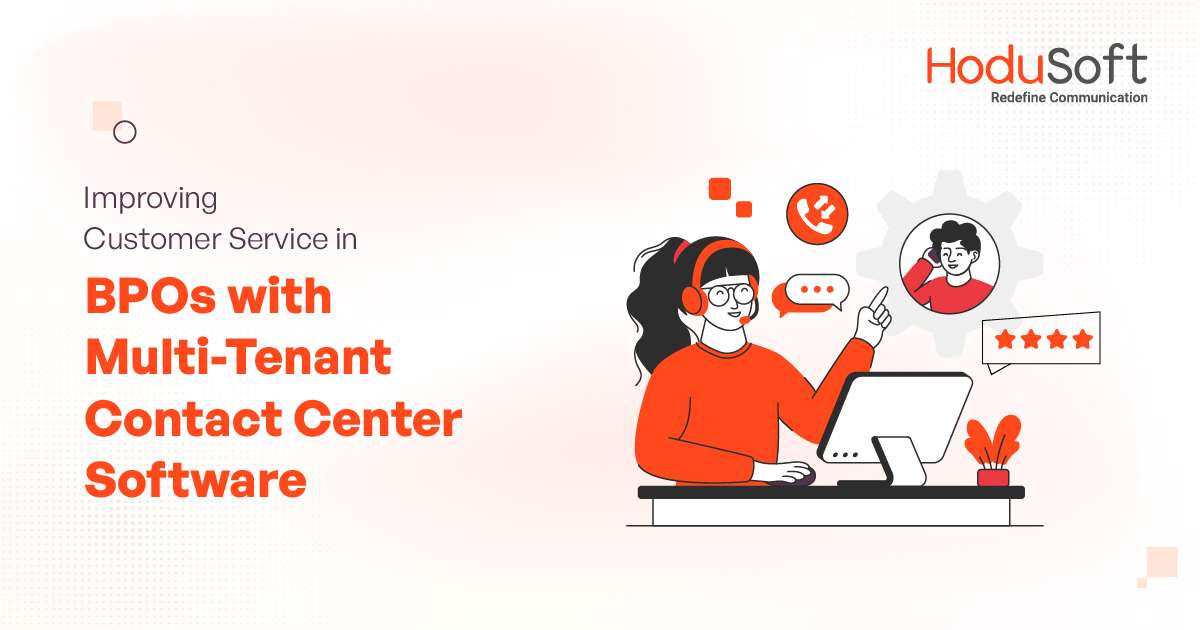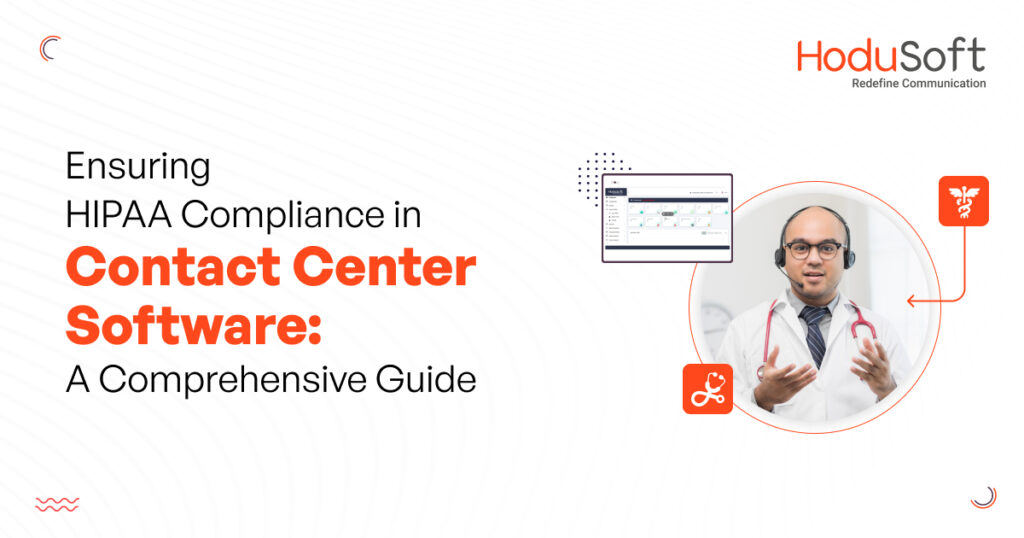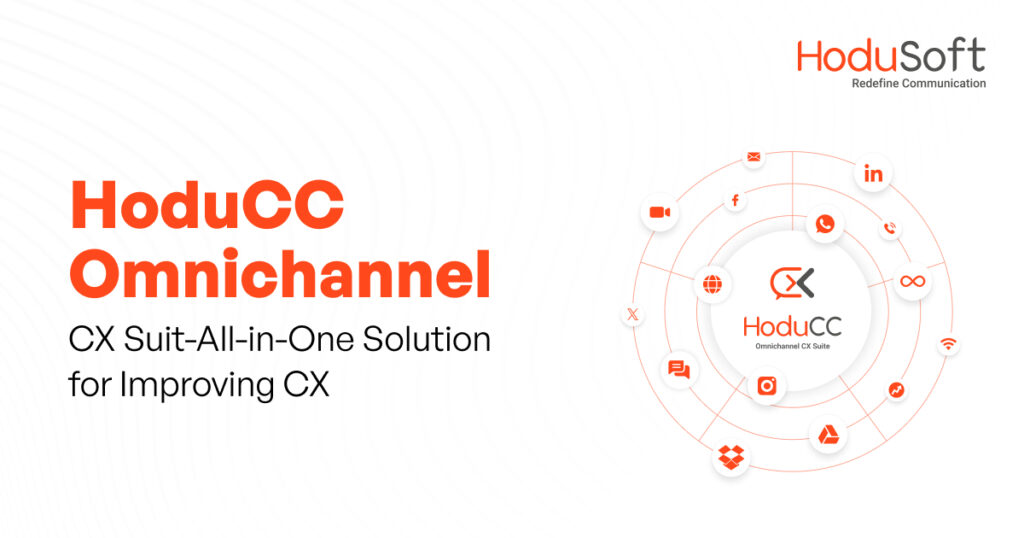Improving Customer Service in BPOs with Multi-Tenant Contact Center Software
Noted management guru Peter F. Drucker once said “Do what you do best. Outsource the rest.” It isn’t surprising to see that many small, medium, and large businesses outsource their customer service to BPOs.
As per a study conducted by Clutch, more than one-fourth of small businesses surveyed outsource their customer service to BPOs (business process outsourcing organizations). When it comes to mid-sized and enterprise-level organizations, many of them follow suit.
Just imagine you are a business owner who is considering outsourcing customer service. You get two options as you look for a suitable BPO.
With the first option, you get the choice of logging into your analytics and getting real-time reports on various Key Result Areas (KRAs) and Key Performance Indicators (KPIs.) The BPO says you are the owner of your customer service process and you feel like that.
With the second, you get the choice to get auto-generated analytics and reports at the end of the day but you can’t access your BPO’s portal and you don’t get live updates. Of the two, which one would you choose?
The first option, of course! It not only enables you to track and analyze real-time data but gives you ownership of your customer service process. That’s the power of multi-tenant contact center software for BPOs!
At HoduSoft, we have enabled many BPOs to serve their clients in the most exceptional manner by providing them with our sophisticated and high-quality multi-tenant contact center software. In this blog post we have discussed the benefits of multi-tenant contact center software for both BPOs and their clients and how it enhances customer service operations.
- What is Multi-tenant Contact Center Software?
- How can Multi-tenant Contact Center Software address some major common pain points of organizations?
- How Multi-tenant Contact Center Software can address some major common pain points of BPOs?
- Additional Benefits of using Multi-tenant Contact Center Software
What Is Multi-tenant Contact Center Software?
Multi-tenant contact center software is a cloud-based solution that allows multiple clients (tenants) to use the same software infrastructure and manage their customer service in the best way possible.
The software offers a shared model for different tenants, enabling them to collectively use network infrastructure and other common resources. However, every tenant gets a separate space, which allows them to safeguard their data and interactions.
Let’s understand multi-tenant contact center software with an example. Imagine an office building called the contact center. In the building, people called agents work to handle phone calls from customers who need help or have questions.
These customers belong to different companies and the contact center uses multi-tenant software to manage customer interactions of all its clients. With multi-tenant contact center software, it’s like having a magical building where all the companies share the same big room and use the same powerful tools together!
The multi-tenant system has custom dashboards for each company. These dashboards show important information about the customers and the phone calls.
It helps the companies know what their customers need and provide the best service. Business owners just need to log in to their dashboards and get all real-time analytics and generate reports with just a few clicks of a button.
One of the most amazing things about multi-tenant contact center software is that it can easily integrate with the existing applications the companies use. This makes the contact center software cost-effective because the companies don’t need to spend lots of money on separate tools.
By using multi-tenant contact center software, agents can share resources and support each other. They can fix any bugs or issues together and add new features to make the software even better.
The multi-tenant contact center software also helps companies manage their call volumes efficiently. It’s like having extra hands to handle all the phone calls, so no call gets missed, and the customers are happy.
The next important thing is data security. Multi-tenant contact center software is like a super secure vault, where every company’s data is locked and only accessible to them.
When it comes to storage, multi-tenant contact center software is hosted in the cloud, which means that companies don’t need to be in the BPOs’ buildings or premises to access the software. They can access it from anywhere using the internet.
How Can Multi-tenant Contact Center Software Address Some Major Common Pain Points Of Organizations?
One of the major reasons that many organizations outsource their customer service functions to BPO is to save time and costs.
Here are some more ways multi-tenant contact center software addresses their pain points and provides them with the right solution.
1. Ownership and control
Loss of control is probably the biggest pain point of organizations that outsource customer service to BPOs and third-party service providers (that use single-tenant software.)
After delegating customer service, companies not only lose control over customer experience but many don’t get live and real-time access to key reports and insights.
But multi-tenant contact center software can enable organizations to log in to their BPOs’ portals and see live reports and data of agents.
Business owners or senior management team access and study their data whenever they want just by logging into their computer system, without any interference from others. Their data is separated from other companies, which ensures privacy and security.
Multi-tenant contact center software provides comprehensive reports and insights about customer interactions, call volumes, customer satisfaction, and more. With full ownership and control over their data and reports, companies can know how their BPOs and contact centers are performing.
2. Virtual numbers and local presence
Apart from providing customer service, some companies also make outbound calls for different purposes. It can be used to send emergency notifications, conduct customer surveys, take customer feedback, or conduct marketing campaigns.
In such cases, if they don’t have local virtual numbers then they are unlikely to get a response from a majority of customers.
But virtual numbers will give them random mobile numbers, which will increase the response rate. Local DID numbers can enable businesses to make customers feel more comfortable as the numbers feel more accessible and reliable.
Businesses can use customized virtual numbers in advertisements or promotional materials to attract specific target audiences and improve the effectiveness of marketing campaigns.
Virtual numbers can provide an added layer of privacy and security for both businesses and customers. Companies can assign specific virtual numbers to different marketing campaigns or departments, making it easier to track the effectiveness of each initiative.
3. Alleviate data security concerns
Data security is a huge concern for those businesses that handle sensitive customer information. It’s also a significant pain point, particularly in industries with strict compliance requirements.
That’s why sharing customer data with external service providers raises concerns about data security and confidentiality.
But multi-tenant contact center software provides isolated data segmentation for each tenant (business). It’s like having individual compartments within a secure vault.
This means that each company’s data is kept separate from others and eliminates unauthorized access between tenants.
Multi-tenant contact center software employs robust encryption techniques to protect data both in transit and at rest. It’s like converting important messages into secret codes that can only be deciphered by authorized parties.
4. Overcome integration challenges
Many businesses use various software and systems for different functions, such as customer relationship management (CRM) systems, ticketing platforms, marketing automation, and helpdesk software.
These systems often operate in isolation, leading to data silos where important information is scattered and not easily accessible across the organization.
Sophisticated multi-tenant contact center software comes with built-in integrations or APIs (Application Programming Interfaces) that allow seamless integration with popular CRM, helpdesk, and other business systems. This simplifies the integration process and reduces the complexity and cost associated with custom integrations.
The software ensures real-time data syncing across different business platforms and systems, which prevents data silos and inconsistencies. This leads to a holistic view of customer interactions and enables data-driven decision-making.
How Multi-tenant Contact Center Software Can Address Some Major Common Pain Points Of Bpos?
BPOs and contact centers that take up customer service tasks from various clients also have so many pain points. Some of those are:
1. Enhance FCR
A study conducted by SQM Group revealed that nine out of every ten respondents (93 percent, to be precise) expect their issues to be resolved or their queries to be answered on the very first call. With so many customers valuing first-call resolution (FCR), the industry standard of 75 percent feels inadequate.
That’s why, it’s not surprising to find, many BPOs and contact centers are doing whatever they can to increase their first call resolution rate. Here’s where multi-tenant contact center software can come in handy.
With features such as multi-level Interactive Voice Response (IVR), skill-based routing, self-service solutions such as chatbots, knowledge base routing, frequently asked questions (FAQs) and more, high-quality multi-tenant contact center software can increase FCR by leaps and bounds.
For instance, IVR will provide callers with a wide range of options ranging from the language they speak to the department they want to speak to, and the problems they have with the product or service.
By selecting the right options, they get connected to an agent who has the right skill sets, understanding, and experience to help them with their query or issue.
Other self-service solutions can enable callers to resolve their issues by themselves without taking anyone’s help.
2. Streamline communication channels
Many contact centers and BPOs have disorganized and disjointed channels that hinder their ability to communicate with their customers and stakeholders.
Nowadays, a majority of people have easy access to multiple communication channels and they use those to communicate with businesses.
In such a scenario, businesses should prioritize multi-channel support and make sure their customers can contact it using audio calls, video calls, text messages, emails, live chats, instant messages, social media, and more.
Multi-tenant contact center software can efficiently manage customer interactions across various channels. By using reliable software, businesses can provide comprehensive multi-channel support to their clients as well as ensure seamless communication and a unified customer experience. Organizations can centralize their resources, which enables them to manage tenant data securely and efficiently.
3. Proactive management
The lack of proactive management is a significant pain point for BPOs, as it can lead to various operational challenges and reduced efficiency.
Proactive management involves taking preemptive measures to identify and address potential issues before they escalate into significant problems.
Multi-tenant contact center software offers customizable performance dashboards that present key metrics, real-time analytics, and reporting capabilities in a visually appealing manner. This empowers managers to identify trends and potential issues promptly, facilitating proactive decision-making.
Multi-tenant contact center software often includes Quality Assurance (QA) tools that enable proactive monitoring of agent interactions with customers. This ensures adherence to quality standards and provides opportunities for targeted coaching and training to improve performance.
4. Avoid agent burnout
Agent burnout is a serious issue in the contact center industry. It not only impacts the employees’ well-being but also affects overall productivity and customer service quality.
Agent burnout can lead to increased absenteeism, reduced job satisfaction, and higher turnover rates. One research found that almost three-fourths of respondents said that they are at risk of burnout!
Multi-tenant contact center software can automate repetitive and mundane tasks, reducing the burden on agents. Tasks like filling up customer details, call details, and feedback can be streamlined with automation, allowing agents to focus on more meaningful and engaging interactions with customers. This helps in alleviating the monotony and stress associated with repetitive tasks.
Multi-tenant contact center software can facilitate gamification in the work environment. Creating leaderboards, setting targets, and offering incentives for achievements can add an element of excitement and healthy competition among agents. This can help in keeping agents engaged and motivated, reducing the likelihood of burnout.
Additional Benefits Of Using Multi-tenant Contact Center Software
Apart from addressing the burning pain points of both BPOs and clients, multi-tenant contact center software also provides many additional benefits such as:
1. Cost-effectiveness
Multi-tenant contact center software enables BPOs to serve multiple tenants (clients) from a single, centralized platform. BPOs can enjoy significant cost savings by utilizing multi-tenant contact center software. Multi-tenant contact center system runs on VoIP-based telephony systems, which reduce local and international calls by at least 50 percent.
The software also comes with a feature called least-cost routing (LCR), which finds the least expensive paths to handle both incoming and outgoing calls. This feature is a huge cost saver for those organizations that handle hundreds or thousands of calls per day. Furthermore, the multi-tenancy approach optimizes resource utilization, reducing hardware and maintenance costs.
2. Scalability
Werner Vogels, the chief technology officer at Amazon, best-defined scalability by quoting “A service is said to be scalable if when we increase the resources in a system, it results in increased performance in a manner proportional to resources added.”
Scalability is crucial for every BPO. That’s because BPOs often experience fluctuations in call volumes based on their client’s requirements.
Multi-tenant contact center software allows BPOs to scale up or down rapidly, adding or removing seats and resources as needed. This flexibility ensures optimal resource utilization and enables BPOs to accommodate changing demands efficiently.
3. Quick deployment
Quick deployment is a key advantage of multi-tenant contact center software. That’s because quick deployment enables BPOs to get started with their call center operations, onboard clients with immediate requirements, and scale up (or scale down) their call volumes whenever they need.
Multi-tenant contact center software is designed for quick and easy deployment. BPOs can set up new client accounts rapidly, which is especially advantageous when dealing with time-sensitive projects or onboarding new clients with immediate requirements. This agility allows BPOs to stay competitive and meet their clients’ evolving needs promptly.
4. Centralized management
With multiple clients, BPOs need to handle a wide array of tasks, interactions, and data across different accounts. They can immensely benefit from centralized management, which multi-tenant contact center software provides them. By using the software, BPOs can manage multiple client accounts from a centralized platform.
With a single, unified platform, BPOs gain comprehensive visibility and control over all client accounts, allowing them to efficiently monitor performance, track KPIs, and access real-time data across their entire operation.
This streamlined approach enhances operational efficiency and simplifies account management, reducing the complexity associated with handling multiple systems.
5. Customization and branding
Multi-tenant contact center software enables BPOs to customize the user interface and experience for each client. They can brand the interface with their client’s identity and configure settings specific to their client’s needs. They can also incorporate their clients’ logos, colors, and branding elements into the interface.
Additionally, BPOs can configure settings and workflows based on individual client preferences, which enables them to ensure that each client receives a tailored and professional customer experience.
In a nutshell,
Since its introduction, multi-tenant contact center software has proved to be a game-changer for BPOs. By leveraging it, BPOs can enhance customer service and operational efficiency and provide their clients with full ownership and control of their customer service process.
At HoduSoft, our contact center software has helped many BPOs provide exceptional customer service and strengthen their competitive edge in the industry. If you want to try our multi-tenant contact center software, contact us today for a free demo.



